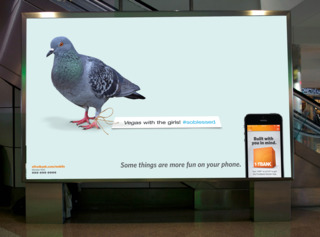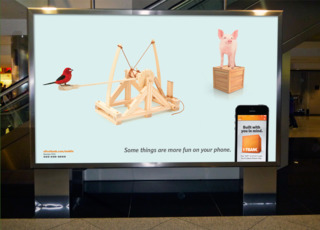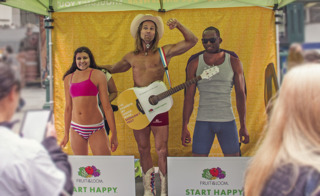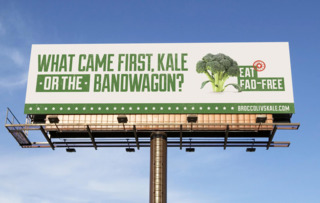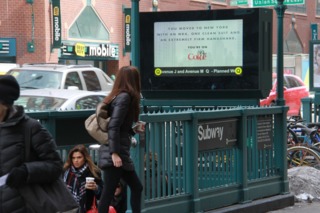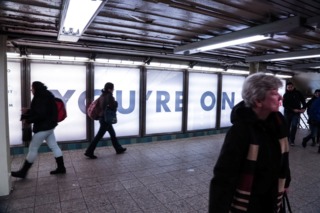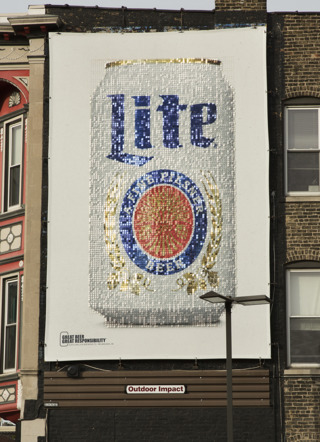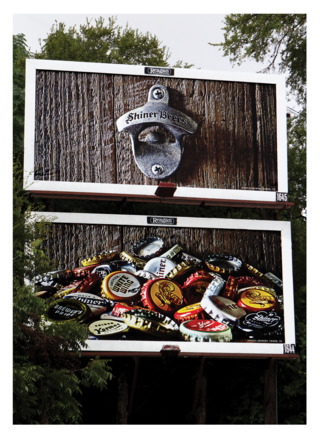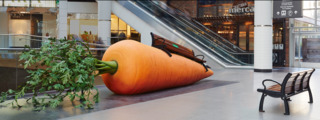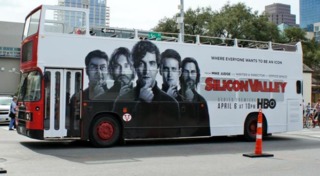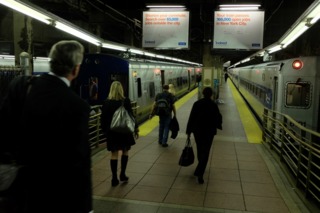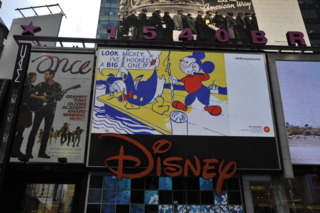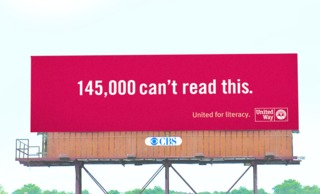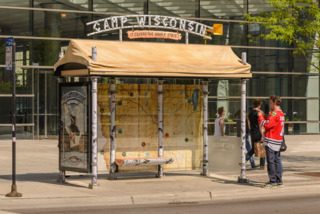Out of Home Advertising Extends Its Reach
For brands looking to extend their reach, out-of-home (OOH) advertising applications are a dream come true.

To understand the impact of out-of-home advertising, take note of JCDecaux, a leading player in the market. Having won the Transport for London’s bus shelter contract, worth an estimated $1billion, the Paris-headquartered company recently announced its vision for its “London Digital Network,” to completely digitize London’s famed Oxford Street with double-sided digital bus shelters.
The concept is to outfit the bus shelters with 1,000 brand new 84-inch digital screens, 40 percent larger than the existing screens. JCDecaux’s vision is to see the network span across London’s key retail zones, from Shoreditch, to Brixton, and from Knightsbridge to Richmond.
In order to deliver the LDN campaigns, the channel will be supported through big data and a new supply-side platform called SmartBRICS. Retail spend data from CACI, social media feed, and frame-by-frame audiences from route can be used to target campaigns to optimize audience delivery. The SmartBRICS engine will enable campaigns to serve the right copy to the right screen in the right location at the right time.
Additionally, JCDecaux will launch “Connected London”, an exclusive panel of 5,000 Londoners who will provide daily data on mindset, attitudes, brand preferences, and lifestyle. This new community will provide essential insight into what makes Londoners tick and how they can be targeted via the LDN.
For brands looking to extend their reach, out-of-home (OOH) advertising applications are a dream come true. While digital signage is a big part of OOH advertising, the medium is adaptable to any environment, indoor or outdoor. Along with digital signage, it includes everything from billboards to vehicle wraps to transit advertising, kiosks, street furniture, and oversized signage facing out onto city streets or mall interiors.
For print service providers looking to extend their reach, OOH advertising is worth more than just a passing glance. From 2004-2014, OOH advertising’s share of total advertising spend grew from 3 percent to 5.2 percent, details Outdoor Advertising Association of America (OAAA) in its “Out of Home Advertising Today” report. More recent figures offered by the industry association demonstrate out of home (OOH) advertising revenue rose 3.8 percent in the second quarter of 2015 compared to the previous year, accounting for $2.25 billion.
Not convinced? According to Kantar Media, total ad spend in the U.S. was down nearly seven percent for the second quarter, with OOH and local radio the only traditional media to see significant growth.
“All major OOH categories continue to grow, and nine of the top 10 product categories are showing increases for the year," commented OAAA President & CEO Nancy Fletcher. "This is particularly significant given the comparison to other traditional media and second quarter GDP growth of 2.3 percent.”
The nine revenue growth categories include Miscellaneous Services and Amusements; Retail; Media & Advertising; Public Transportation; Financial; Insurance & Real Estate; Government, Politics & Organizations; Communications; and Automotive Dealers and Services.
Also enticing for PSPs is the fact that both large brands, from Apple to Estee Lauder to McDonald’s, use OOH advertising applications as well as a diverse platter of local businesses.
While the entire OOH segment continues to see steady growth, digital OOH is increasingly proving its effectiveness with the use of high-tech measurement techniques that range from passive audience detection to mobile engagement and more, said Stephen Freitas, OAAA Chief Marketing Officer. DOOH – along with more traditional forms of OOH – allow brands to communicate in compelling ways that can facilitate meaningful engagement with active people.
“A clear indication of DOOH’s vitality is the attention it is garnering from technology companies,” he said. “Apple iBeacons are being integrated into more DOOH campaigns, facilitating mobile use to trigger purchases. Earlier this year, Google formed a joint venture with a plan to replace payphone booths with free WiFi hot spots across the five New York boroughs.”
Also, companies intrigued by the promise of the Internet of Things (IoT) are focused on DOOH, believing the OOH Industry will be a prime driver for what the IoT will ultimately become.
“Studies show that consumers spend 70 percent of their waking hours away from home, which means they are more exposed to OOH and DOOH ads than nearly any other form of advertising,” Freitas said. “They are almost certainly carrying their smartphones, and this makes the paring of OOH and mobile a powerful combination for effective advertising.”
Members of the International Sign Association (ISA), acknowledged Brandon Hensley, ISA Chief Operating Officer, are talking more about the increase in allowing the public to connect and interact through mobile devices with signage.
ISA sees DOOH as a growth area for its members, added Hensley. “DOOH (digital out-of-home) media benefits location owners and advertisers alike in being able to engage customers and/or audiences and extend the reach and effectiveness of marketing messages. The overall industry has been growing around 15 percent to around $2.1 billion, according to Patrick Quinn, CEO and founder of PQ Media, a market intelligence provider.
Also, according to PQ Media, the U.S. is the world’s largest DOOH market based on revenues, and ranks fourth in consumer exposure to DOOH, behind Australia, the UK, and Canada.
IHS (a leading provider business information, insight and analytics) forecasts digital signage revenue to grow from 15.5% of all global OOH advertising revenue for 2015 to 16.7 percent in 2016, reveals ISA’s Sign Industry Quarterly Economic Report. DOOH advertising is taking on a greater role as industries and organizations seek new avenues through which to connect with consumers.
For PSPs not interested in going the digital route, there’s still work to be had. USA Image Technologies, which opened its doors in Louisville, KY in fall 1994, focuses on grand-format digital printing, including OOH advertising. “We've always kept ‘large’ output as our main focus, and our 30,000-sq-ft facility is designed to handle that with 5 meter printing machinery, a 50' RF seamer, and in-house sewing,” noted Judd Morgan, Marketing and Business Development. “Large may mean an 80x150' wallscape, or it may mean a 400 quantity banner job; when you can handle larger items the smaller ones are no problem at all.”
Morgan sees multiple markets growing, both in terms of industry interest in producing the application and in customers’ demand. One such area is vehicle graphics. “The barrier to entry is at an all-time low, and machinery and materials are lower priced than before allowing more people to add these capabilities,” said Morgan. “This can be problematic when job bids are quoted/won using inferior materials. We've always used long-term films coupled with continued education for our installers to stay on top of industry trends. The better material really pays off in ease of use, staying power, and removability.”
Another hot area is retail branding, he explained, “as retailers are purchasing larger atmospheric branding pieces that reinforce brand but are a bit wider in artistic scope.”
Still another area that is capturing a lot of attention is wallscapes. “In the last few years cities and businesses have added revenues from leasing building sides for banners,” said Morgan. “In other instances such as Louisville, wallscapes have been used to tout the cities history and reinforce its national image.” It’s a win-win for all involved, as what was wasted space is beautified, showing the locale off to good advantage and drawing in locals and tourists to the area.
Interior wrapped walls are also generating a lot of interest. Brands are able to create a unique experience for the consumer, and also easily update information or the design. USA Image Technologies offers a wide range of textures and application types, using textured wallpaper; seamless artist-grade canvas; floating edge-mounted vinyl wall graphic; pressure-sensitive vinyls; and/or textured surface/brick wrap.
Until a few years ago brick areas were impossible to wrap. Now, advanced installation techniques combined with the latest in ultra-conformable materials have bridged the gap, allowing providers such as USA Image Technologies to offer customers wraps applied to textured surfaces of all kinds.






























